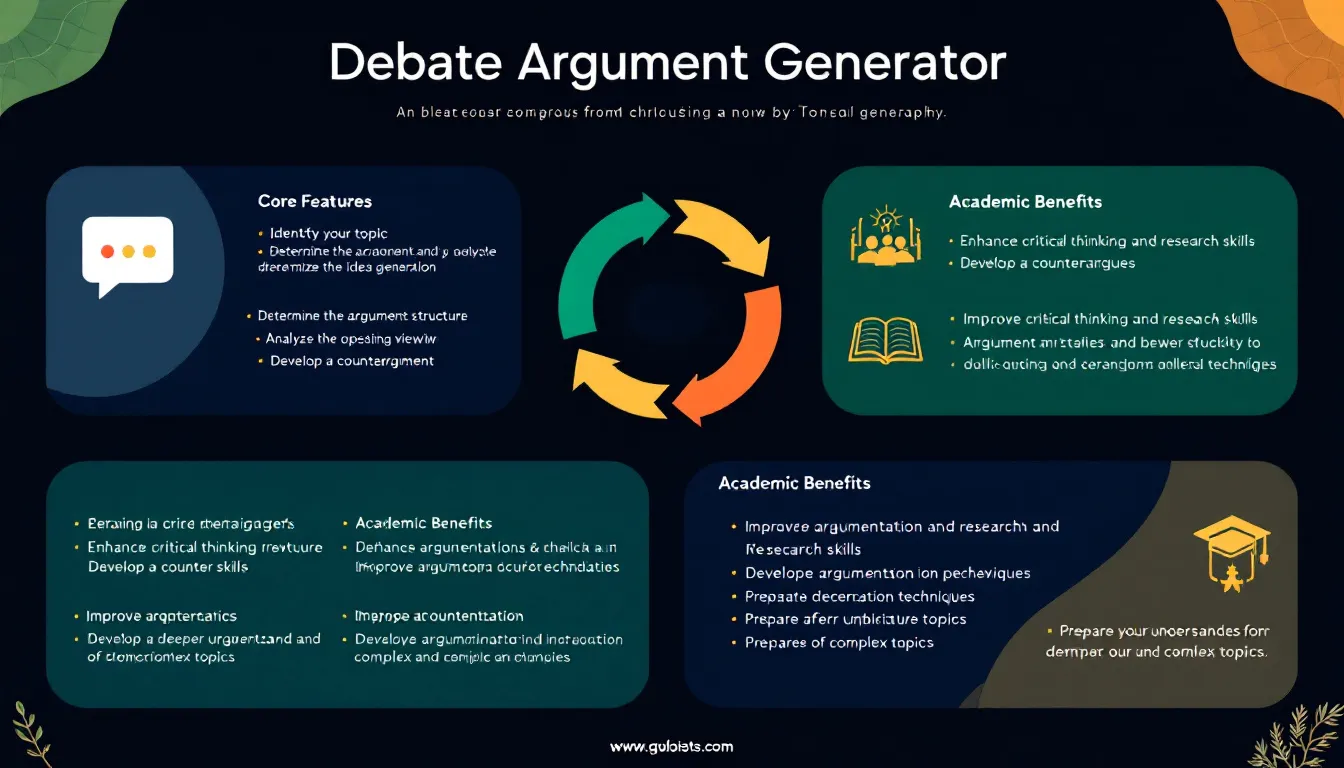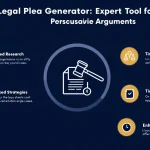Debate Topic Analysis
Is this tool helpful?
How to Use the Debate Argument Generator Effectively
Follow these simple steps to create well-structured arguments and counterarguments on any controversial topic using this tool:
-
Enter your specific debate topic in the text box. Be clear and focused. For example:
- “Should electric vehicles replace gasoline cars by 2030?”
- “Is remote work more productive than working in an office?”
- Click the “Generate Debate Analysis” button to start processing the topic.
- Review the generated debate analysis. It provides organized arguments supporting and opposing the topic.
- Use the “Copy to Clipboard” button to save and reference the debate content later.
What Is the Debate Argument Generator and Why Use It?
The Debate Argument Generator is an online tool that helps you explore any controversial subject by producing clear, balanced, and logical arguments from multiple perspectives. It simplifies complex issues into manageable points, allowing you to understand both sides deeply and prepare stronger, more persuasive debates.
This tool suits students, educators, professionals, and anyone looking to improve critical thinking and argumentation skills.
Key Benefits of Using the Debate Argument Generator
- Enhanced Critical Thinking: Break down complex topics, identify key arguments, and challenge your assumptions.
- Balanced Viewpoints: Get a fair evaluation of both supporting and opposing sides for well-rounded understanding.
- Improved Preparation: Use it for academic essays, debate teams, and professional policy analysis.
- Time Efficiency: Quickly generate structured content to save research and drafting time.
How the Tool Analyzes Your Debate Topic
The generator uses a systematic process to create comprehensive debate content:
1. Topic Breakdown
It divides your topic into essential components to focus the analysis clearly.
2. Argument Mapping
It identifies main arguments and counterarguments, organizing them logically.
3. Evidence Integration
The tool incorporates relevant facts, data, and expert opinions to support each point.
4. Logical Coherence
It ensures arguments flow naturally and the reasoning stays clear and persuasive.
Practical Uses of the Debate Argument Generator
Academic Settings
- Debate team preparations
- Essay development
- Research paper planning
- Classroom discussion support
Professional Contexts
- Policy and legislation analysis
- Strategic business decision-making
- Legal case preparation
- Public speaking and presentation planning
Example Use Cases
Environmental Policy Debate
Topic: “Should governments ban single-use plastics to reduce pollution?”
The tool generates:
- Environmental impact assessments
- Economic considerations for manufacturers
- Consumer adaptation challenges
- Policy enforcement and compliance issues
Technology Adoption Debate
Topic: “Should governments adopt a digital currency as legal tender?”
The tool generates:
- Financial system security analysis
- Privacy and data protection concerns
- Economic stability effects
- Impact on traditional banking systems
Frequently Asked Questions
What types of topics work best with this tool?
You can analyze any controversial topic in areas like politics, economics, technology, environment, healthcare, and education.
How specific should my topic be?
Make your topic focused enough to guide the analysis clearly, but broad enough to allow a meaningful debate. For example, instead of “social media,” try “Should social media platforms regulate political ads?”
Can I use the generated content in academic papers?
Yes. The analysis offers a strong foundation, but supplement it with your own research and critical thinking.
How often should I generate arguments for the same topic?
You can submit the topic multiple times to explore different angles or updated information.
Can I analyze several related issues at once?
Focusing on one well-defined issue usually provides clearer and more useful debate arguments.
Important Disclaimer
The calculations, results, and content provided by our tools are not guaranteed to be accurate, complete, or reliable. Users are responsible for verifying and interpreting the results. Our content and tools may contain errors, biases, or inconsistencies. Do not enter personal data, sensitive information, or personally identifiable information in our web forms or tools. Such data entry violates our terms of service and may result in unauthorized disclosure to third parties. We reserve the right to save inputs and outputs from our tools for the purposes of error debugging, bias identification, and performance improvement. External companies providing AI models used in our tools may also save and process data in accordance with their own policies. By using our tools, you consent to this data collection and processing. We reserve the right to limit the usage of our tools based on current usability factors.







